-
Executive Summary
-
Scope of the Report
-
Market Definition
-
Scope of the
- Research Objectives
- Assumptions & Limitations
-
Study
-
Market Structure
-
Market
-
Research Methodology
-
Research Process
-
Secondary Research
-
Primary Research
-
Forecast Model
-
Market Landscape
-
Supply Chain Analysis
-
Porter’s Five Forces Analysis
-
Threat of New Entrants
-
Power of Buyers
-
of Suppliers
-
Market Dynamics of Global Antistatic Agents Market
-
Introduction
-
Opportunities
-
Trends/Strategies
-
Raw Material Suppliers
-
Manufacturers/Producers
-
Distributors/Retailers/Wholesalers/E-Commerce
-
End-Users
-
Bargaining
-
Bargaining Power
-
Threat of Substitutes
-
Intensity of Competitive Rivalry
-
Drivers
-
Restraints
-
Challenges
-
Global Antistatic
-
Agents Market, by Antistats
-
Introduction
- Market Estimates & Forecast, 2020–2027
-
Ethoxylated Fatty Acid Amines
-
Market Estimates & Forecast, by Region, 2020–2027
-
Diethanolamides
-
Market Estimates & Forecast, 2020–2027
-
Market Estimates & Forecast, by Region, 2020–2027
-
Glycerol Monostearate
-
Market Estimates & Forecast, 2020–2027
-
Market Estimates & Forecast, by Region, 2020–2027
-
Quaternary Ammonium Compounds
-
Market Estimates & Forecast, 2020–2027
-
Market Estimates & Forecast, by Region, 2020–2027
-
Alkylsulfonates
-
Market Estimates & Forecast, 2020–2027
-
Market Estimates & Forecast, by Region, 2020–2027
-
Others
-
Market Estimates & Forecast, 2020–2027
-
Estimates & Forecast, by Region, 2020–2027
-
Market
-
Global
-
Antistatic Agents Market, by Polymer Type
-
Introduction
-
PP
- Market Estimates & Forecast, 2020–2027
- Market Estimates & Forecast, by Region, 2020–2027
- Market Estimates & Forecast, 2020–2027
- Market Estimates & Forecast, by Region, 2020–2027
- Market Estimates & Forecast, 2020–2027
- Market Estimates & Forecast, by Region, 2020–2027
- Market Estimates & Forecast, 2020–2027
- Market Estimates & Forecast, by Region, 2020–2027
- Market Estimates & Forecast, 2020–2027
- Market Estimates & Forecast, by Region, 2020–2027
- Market Estimates & Forecast, 2020–2027
- Market Estimates & Forecast, by Region, 2020–2027
-
ABS
-
PE
-
PVC
-
PET
-
Others
-
Global Antistatic Agents Market, by End-Use Industry
-
Introduction
-
Packaging
- Market Estimates
-
Market Estimates & Forecast, 2020–2027
-
& Forecast, by Region, 2020–2027
-
Electronics
- Market Estimates & Forecast, 2020–2027
-
Market Estimates & Forecast, by Region, 2020–2027
-
Automotive
-
Textile
-
Military
-
Others
-
Market Estimates & Forecast, 2020–2027
-
Market Estimates & Forecast, by Region, 2020–2027
-
Market Estimates & Forecast, 2020–2027
-
Market Estimates & Forecast, by Region, 2020–2027
-
Market Estimates & Forecast, 2020–2027
-
Market Estimates & Forecast, by Region, 2020–2027
-
Market Estimates & Forecast, 2020–2027
-
Market Estimates & Forecast, by Region, 2020–2027
-
Global Antistatic Agents Market, by Region
-
Introduction
-
North America
- Market Estimates &
- Market Estimates & Forecast,
- Market Estimates & Forecast,
- Market Estimates &
-
Forecast, 2020–2027
-
by Antistats, 2020–2027
-
by Polymer Type, 2020–2027
-
Forecast, by End-use Industry, 2020–2027
-
US
-
Market Estimates & Forecast, 2020–2027
-
Market Estimates & Forecast, by Polymer Type, 2020–2027
-
& Forecast, by End-use Industry, 2020–2027
-
Canada
-
Market Estimates & Forecast, 2020–2027
-
by Antistats, 2020–2027
-
& Forecast, by End-use Industry, 2020–2027
-
& Forecast, by Antistats, 2020–2027
-
Market Estimates
-
Market Estimates & Forecast,
-
Market Estimates & Forecast, by Polymer Type, 2020–2027
-
Market Estimates
-
Europe
- Market Estimates & Forecast, 2020–2027
- Market Estimates & Forecast, by Antistats, 2020–2027
- Market Estimates & Forecast, by Polymer Type, 2020–2027
- Market Estimates & Forecast, by End-use Industry, 2020–2027
- Germany
-
Market Estimates & Forecast, by End-use Industry, 2020–2027
-
Market Estimates & Forecast, 2020–2027
-
by Antistats, 2020–2027
-
& Forecast, by End-use Industry, 2020–2027
-
& Forecast, 2020–2027
-
& Forecast, by Polymer Type, 2020–2027
-
Industry, 2020–2027
-
France
-
Market Estimates & Forecast,
-
Market Estimates & Forecast, by Polymer Type, 2020–2027
-
Market Estimates
-
Italy
-
Market Estimates
-
Market Estimates & Forecast, by Antistats, 2020–2027
-
Market Estimates
-
Market Estimates & Forecast, by End-use
-
Spain
-
Market Estimates & Forecast,
-
Market Estimates & Forecast, by Antistats, 2020–2027
-
& Forecast, by Polymer Type, 2020–2027
-
Industry, 2020–2027
-
Market Estimates
-
Market Estimates & Forecast, by End-use
-
UK
-
Market Estimates & Forecast,
-
Market Estimates & Forecast, by Antistats, 2020–2027
-
& Forecast, by Polymer Type, 2020–2027
-
Industry, 2020–2027
-
& Forecast, 2020–2027
-
& Forecast, by Polymer Type, 2020–2027
-
Industry, 2020–2027
-
Forecast, 2020–2027
-
& Forecast, by Polymer Type, 2020–2027
-
Industry, 2020–2027
-
& Forecast, 2020–2027
-
& Forecast, by Polymer Type, 2020–2027
-
Industry, 2020–2027
-
Market Estimates & Forecast, 2020–2027
-
Market Estimates
-
Market Estimates & Forecast, by End-use
-
Russia
-
Market Estimates
-
Market Estimates & Forecast, by Antistats, 2020–2027
-
Market Estimates
-
Market Estimates & Forecast, by End-use
-
Poland
-
Market Estimates &
-
Market Estimates & Forecast, by Antistats, 2020–2027
-
Market Estimates
-
Market Estimates & Forecast, by End-use
-
Rest of Europe
-
Market Estimates
-
Market Estimates & Forecast, by Antistats, 2020–2027
-
Market Estimates
-
Market Estimates & Forecast, by End-use
-
Asia-Pacific
-
Market Estimates & Forecast, by Antistats, 2020–2027
-
Market Estimates & Forecast, by Polymer Type, 2020–2027
-
& Forecast, by Antistats, 2020–2027
-
Market Estimates & Forecast, by End-use Industry, 2020–2027
-
China
-
Market Estimates & Forecast, 2020–2027
-
Market Estimates
-
Market Estimates & Forecast, by Polymer Type,
-
Market Estimates & Forecast, by End-use Industry, 2020–2027
-
& Forecast, by Antistats, 2020–2027
-
India
-
Market Estimates & Forecast, 2020–2027
-
Market Estimates
-
Market Estimates & Forecast, by Polymer Type,
-
Market Estimates & Forecast, by End-use Industry, 2020–2027
-
& Forecast, by Antistats, 2020–2027
-
Japan
-
Market Estimates & Forecast, 2020–2027
-
Market Estimates
-
Market Estimates & Forecast, by Polymer Type,
-
Market Estimates & Forecast, by End-use Industry, 2020–2027
-
Australia & New Zealand
-
Market Estimates & Forecast,
-
Market Estimates & Forecast, by Antistats, 2020–2027
-
& Forecast, by Polymer Type, 2020–2027
-
Industry, 2020–2027
-
South Korea
-
Market Estimates & Forecast, 2020–2027
-
by Antistats, 2020–2027
-
& Forecast, by End-use Industry, 2020–2027
-
of Asia-Pacific
-
Market Estimates & Forecast, 2020–2027
-
by Antistats, 2020–2027
-
& Forecast, by End-use Industry, 2020–2027
-
Middle East & Africa
-
& Forecast, 2020–2027
-
Forecast, by Antistats, 2020–2027
-
Estimates & Forecast, by Polymer Type, 2020–2027
-
Market Estimates
-
Market Estimates & Forecast, by End-use
-
Indonesia &
-
Market Estimates & Forecast,
-
Market Estimates & Forecast, by Polymer Type, 2020–2027
-
Market Estimates
-
Rest
-
Market Estimates & Forecast,
-
Market Estimates & Forecast, by Polymer Type, 2020–2027
-
Market Estimates
-
Market Estimates
-
Market Estimates &
-
Market
-
Market Estimates & Forecast, by End-use Industry, 2020–2027
-
by Antistats, 2020–2027
-
& Forecast, by End-use Industry, 2020–2027
-
Israel
-
Market Estimates & Forecast, 2020–2027
-
GCC
-
Market Estimates & Forecast, 2020–2027
-
Market Estimates & Forecast,
-
Market Estimates & Forecast, by Polymer Type, 2020–2027
-
Market Estimates
-
Market Estimates & Forecast, by Antistats,
-
Market Estimates & Forecast, by Polymer Type, 2020–2027
-
by End-use Industry, 2020–2027
-
& Forecast, 2020–2027
-
Market Estimates & Forecast,
-
North Africa
-
Market Estimates
-
Market Estimates & Forecast, by Antistats, 2020–2027
-
by Polymer Type, 2020–2027
-
Market Estimates & Forecast, 2020–2027
-
Market Estimates & Forecast,
-
Market Estimates & Forecast, by End-use Industry, 2020–2027
-
Turkey
-
Market Estimates & Forecast, by Antistats,
-
Market Estimates & Forecast, by Polymer Type, 2020–2027
-
by End-use Industry, 2020–2027
-
East & Africa
-
Market Estimates & Forecast, 2020–2027
-
Market Estimates & Forecast,
-
Rest of the Middle
-
Market Estimates & Forecast, by Antistats,
-
Market Estimates & Forecast, by Polymer Type, 2020–2027
-
by End-use Industry, 2020–2027
-
by Antistats, 2020–2027
-
Market Estimates & Forecast,
-
Latin America
- Market Estimates & Forecast, 2020–2027
- Market Estimates & Forecast, by Antistats, 2020–2027
- Market Estimates & Forecast, by Polymer Type, 2020–2027
- Market Estimates & Forecast, by End-use Industry, 2020–2027
- Brazil
-
Market Estimates & Forecast, by Polymer Type, 2020–2027
-
by End-use Industry, 2020–2027
-
& Forecast, 2020–2027
-
Market Estimates & Forecast,
-
Mexico
-
Market Estimates
-
Market Estimates & Forecast, by Antistats, 2020–2027
-
by Polymer Type, 2020–2027
-
& Forecast, by Antistats, 2020–2027
-
& Forecast, by End-use Industry, 2020–2027
-
of Latin America
-
Market Estimates & Forecast, 2020–2027
-
Market Estimates & Forecast,
-
Market Estimates & Forecast, by End-use Industry, 2020–2027
-
Argentina
-
Market Estimates & Forecast, 2020–2027
-
Market Estimates
-
Market Estimates & Forecast, by Polymer Type, 2020–2027
-
Market Estimates
-
Rest
-
Market Estimates & Forecast, by Antistats,
-
Market Estimates & Forecast, by Polymer Type, 2020–2027
-
by End-use Industry, 2020–2027
-
Market Estimates & Forecast,
-
Company Landscape
-
Introduction
-
Market Strategy
-
Key Development Analysis
-
(Expansions/Mergers & Acquisitions/Joint Ventures/New Polymer Type Developments/Agreements/Investments)
-
Company Profiles
-
3M
- Company
- Financial Updates
- Key Developments
-
Overview
-
Polymer Type/Business Segment Overview
-
Strategy
-
SWOT Analysis
-
BASF SE
- Financial Updates
- Polymer Type/Business Segment Overview
- Strategy
- Key Developments
- SWOT Analysis
- Financial Updates
- Polymer Type/Business Segment Overview
- Strategy
- Key Developments
- SWOT Analysis
-
Company Overview
-
DowDuPont
-
Company Overview
-
Akzo Nobel
- Company
- Financial Updates
- Key Developments
-
N.V.
-
Overview
-
Polymer Type/Business Segment Overview
-
Strategy
-
SWOT Analysis
-
Croda International Plc
- Company Overview
- Financial
- Polymer Type/Business Segment
- Strategy
- SWOT Analysis
-
Updates
-
Overview
-
Key Developments
-
A. Schulman, Inc.
- Financial Updates
- Polymer Type/Business Segment Overview
- Strategy
- Key Developments
- SWOT Analysis
-
Company Overview
-
Arkema
- Company
- Financial Updates
- Key Developments
-
Overview
-
Polymer Type/Business Segment Overview
-
Strategy
-
SWOT Analysis
-
Solvay
- Company Overview
- Polymer Type/Business
- Strategy
- SWOT Analysis
- Company Overview
- Polymer Type/Business
- Strategy
- SWOT Analysis
- Financial Updates
- Polymer Type/Business Segment Overview
- Strategy
- SWOT Analysis
-
Financial Updates
-
Segment Overview
-
Key Developments
-
Evonik Industries AG
-
Financial Updates
-
Segment Overview
-
Key Developments
-
Clariant
-
Company Overview
-
Key Developments
-
LyondellBasell Industries N.V.
- Company Overview
- Key Developments
-
Financial Updates
-
Polymer Type/Business Segment Overview
-
Strategy
-
SWOT Analysis
-
Mitsubishi Chemical Holdings
- Financial Updates
- Polymer Type/Business Segment Overview
- Strategy
- SWOT Analysis
-
Corporation
-
Company Overview
-
Key Developments
-
Cummins Inc.
- Company Overview
- Financial
- Polymer Type/Business
- Strategy
- Key Developments
-
Updates
-
Segment Overview
-
SWOT Analysis
-
Lukoil
- Company Overview
- Key Developments
-
Financial Updates
-
Polymer Type/Business Segment Overview
-
Strategy
-
SWOT Analysis
-
Petronas
- Company Overview
- Key Developments
-
Financial Updates
-
Polymer Type/Business Segment Overview
-
Strategy
-
SWOT Analysis
-
Conclusion
-
LIST OF TABLES
-
Global Antistatic Agents
-
Market, by Region, 2020–2027
-
North America:
-
Antistatic Agents Market, by Country, 2020–2027
-
Table 3
-
Europe: Antistatic Agents Market, by Country, 2020–2027
-
Table
-
Asia-Pacific: Antistatic Agents Market, by Country, 2020–2027
-
Middle East & Africa: Antistatic Agents
-
Market, by Country, 2020–2027
-
Latin
-
America: Antistatic Agents Market, by Country, 2020–2027
-
Table
-
Global Antistatic Agents Antistats Market, by Region, 2020–2027
-
North America: Antistatic Agents Antistats
-
Market, by Country, 2020–2027
-
Europe:
-
Antistatic Agents Antistats Market, by Country, 2020–2027
-
Table10
-
Asia-Pacific: Antistatic Agents Antistats Market, by Country, 2020–2027
-
Table11 Middle East & Africa: Antistatic Agents
-
Antistats Market, by Country, 2020–2027
-
Table12 Latin
-
America: Antistatic Agents Antistats Market, by Country, 2020–2027
-
Table13 Global Antistatic Agents Polymer Type Market, by Region,
-
Table14 North America: Antistatic
-
Agents Polymer Type Market, by Country, 2020–2027
-
Table15
-
Europe: Antistatic Agents Polymer Type Market, by Country, 2020–2027
-
Table16 Asia-Pacific: Antistatic Agents Polymer Type
-
Market, by Country, 2020–2027
-
Table17 Middle
-
East & Africa: Antistatic Agents Polymer Type Market, by Country, 2020–2027
-
Table18 Latin America: Antistatic Agents Polymer Type
-
Market, by Country, 2020–2027
-
Table19 Global
-
Antistatic Agents End-Use Industry Market, by Region, 2020–2027
-
Table20
-
North America: Antistatic Agents End-Use Industry Market, by Country, 2020–2027
-
Table21 Europe: Antistatic Agents End-Use Industry
-
Market, by Country, 2020–2027
-
Table22 Asia-Pacific:
-
Antistatic Agents End-Use Industry Market, by Country, 2020–2027
-
Table23 Middle East & Africa: Antistatic Agents End-Use
-
Industry Market, by Country, 2020–2027
-
Table24 Latin
-
America: Antistatic Agents End-Use Industry Market, by Country, 2020–2027
-
Table25 Global Antistats Market, by Region, 2020–2027
-
Table26 Global Polymer Type Market, by Region, 2020–2027
-
Table27 Global End-Use Industry Market, by Region,
-
Table28 North America: Antistatic
-
Agents Market, by Country
-
Table29 North America: Antistatic
-
Agents Market, by Antistats
-
Table30 North America: Antistatic
-
Agents Market, by Polymer Type
-
Table31 North America:
-
Antistatic Agents Market, by End-Use Industry
-
Table32 Europe:
-
Antistatic Agents Market, by Country
-
Table33 Europe:
-
Antistatic Agents Market, by Antistats
-
Table34 Europe: Antistatic
-
Agents Market, by Polymer Type
-
Table35 Europe: Antistatic
-
Agents Market, by End-Use Industry
-
Table36 Asia-Pacific:
-
Antistatic Agents Market, by Country
-
Table37 Asia-Pacific:
-
Antistatic Agents Market, by Antistats
-
Table38 Asia-Pacific:
-
Antistatic Agents Market, by Polymer Type
-
Table39
-
Asia-Pacific: Antistatic Agents Market, by End-Use Industry
-
Table40
-
Middle East & Africa: Antistatic Agents Market, by Country
-
Table41
-
Middle East & Africa Antistatic Agents Market, by Antistats
-
Table42
-
Middle East & Africa Antistatic Agents Market, by Polymer Type
-
Table43 Middle East & Africa: Antistatic Agents Market,
-
by End-Use Industry
-
Table44 Latin America: Antistatic
-
Agents Market, by Country
-
Table45 Latin America Antistatic
-
Agents Market, by Antistats
-
Table46 Latin America Antistatic
-
Agents Market, by Polymer Type
-
Table47 Latin
-
America: Antistatic Agents Market, by End-Use Industry
-
LIST OF FIGURES
-
Global Antistatic Agents Market Segmentation
-
FIGURE
-
Forecast Research Methodology
-
Porter’s
-
Five Forces Analysis of Global Antistatic Agents Market
-
FIGURE 4
-
Value Chain of Global Antistatic Agents Market
-
Share
-
of Global Antistatic Agents Market in 2020, by Country (%)
-
FIGURE 6
-
Global Antistatic Agents Market, 2020–2027,
-
FIGURE 7
-
Global Antistatic Agents Market Size by Antistats, 2020
-
FIGURE 8
-
Share of Global Antistatic Agents Market, by Antistats, 2020–2027
-
FIGURE
-
Global Antistatic Agents Market Size, by Polymer Type, 2020
-
FIGURE
-
Share of Global Antistatic Agents Market, by Polymer Type, 2020–2027
-
Global Antistatic Agents Market Size, by End-Use Industry, 2020
-
Share of Global Antistatic Agents Market, by End-Use Industry,

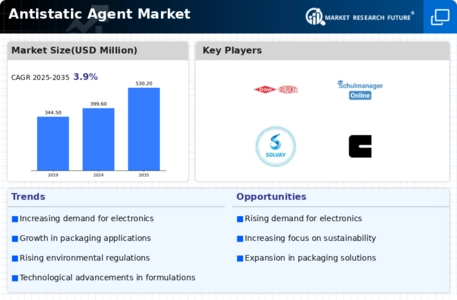
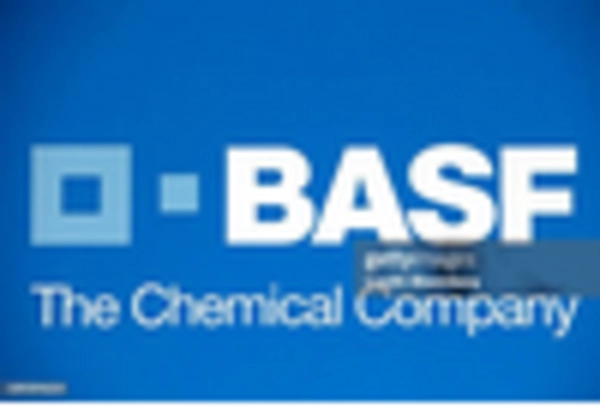
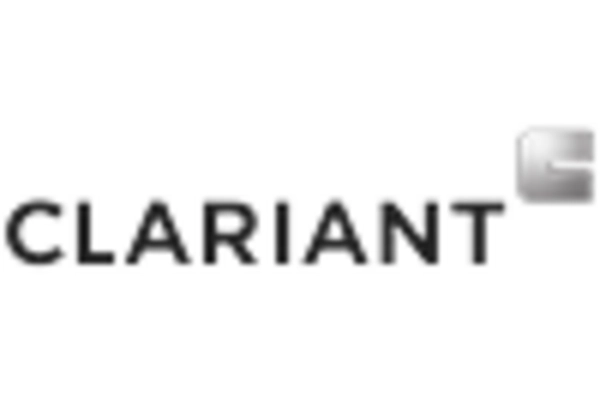

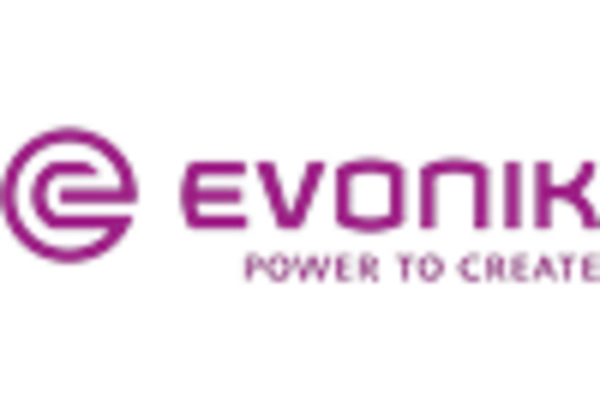
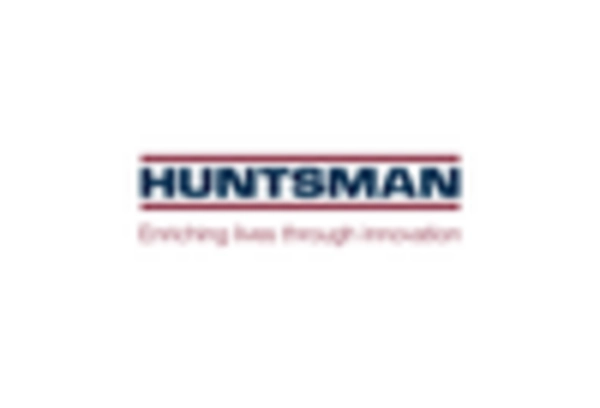
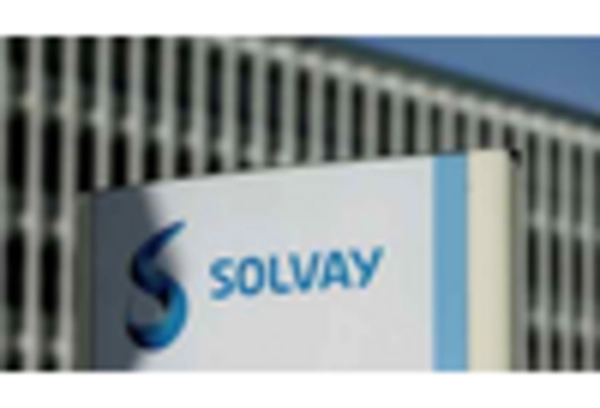









Leave a Comment